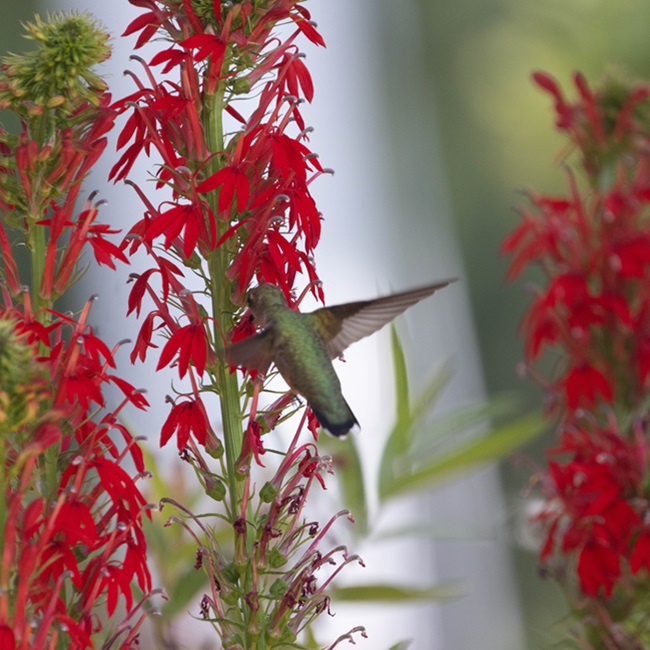Cardinal flowers are a favorite of mine to grow, as they are superb at drawing in hummingbirds. They rank among the best in our garden for attracting these birds. Many cardinal flowers flourish in pots on my deck near the seating area. The hummingbirds often come to these flowers, mere feet from where I'm seated. It's a joy to watch them hover and dart from flower to flower. Being so close also offers an excellent chance to take beautiful photos of the hummingbirds as they flit from one bloom to the next, sipping nectar.
The cardinal flower (Lobelia cardinalis) is a striking native perennial known for its vivid red blooms and its ability to attract hummingbirds like no other plant. Named for its bright, cardinal-red flowers, it brings a burst of color to gardens, particularly those in moist or wet areas. Cardinal flowers are not only beautiful but also vital for pollinators, especially hummingbirds, which find these flowers irresistible.
Why Cardinal Flowers Attract Hummingbirds
Cardinal flowers are a top choice for attracting hummingbirds, thanks to their tubular shape, vibrant red color, and copious nectar production. Hummingbirds are naturally drawn to red and tubular flowers because the shape fits their long, slender beaks perfectly, allowing them to access the nectar efficiently. Additionally, cardinal flowers bloom in late summer to early fall, a critical time when hummingbirds are preparing for migration and need abundant food sources.
The nectar of cardinal flowers is rich in energy, which hummingbirds rely on for their high metabolism and fast-paced lifestyle. The bright red color acts as a beacon to these birds, making the cardinal flower an irresistible stop in their daily feeding routine.
Native Habitat
Cardinal flowers are native to North America, where they are commonly found in wetlands, along stream banks, in moist meadows, and in other areas with rich, damp soil. They thrive in the eastern and central United States and parts of Canada. In the wild, these plants typically grow in areas with partial shade, often near bodies of water where the soil remains consistently moist.
Caring for Cardinal Flowers
Hardiness:
Cardinal flowers are hardy in USDA zones 3 to 9, making them suitable for a wide range of climates. They can handle cold winters and warm summers, though they thrive best in cooler environments with plenty of moisture.
Soil Requirements:
These plants prefer rich, well-drained soil that stays consistently moist. Although they can tolerate average garden soil, they do best in loamy or sandy soil enriched with organic matter. The key to success with cardinal flowers is ensuring that the soil does not dry out completely, as they are adapted to growing in wet conditions.
Water Requirements:
As moisture-loving plants, cardinal flowers need regular watering to keep the soil evenly moist. If planted in a garden, they should be watered frequently, especially during dry spells. In wetter areas, such as rain gardens or near ponds, they may require less additional water. Mulching around the plants can help retain moisture in the soil and prevent it from drying out too quickly.
Nutrient Requirements:
Cardinal flowers benefit from nutrient-rich soil. Adding compost or a balanced fertilizer in the spring can help provide the nutrients they need for healthy growth and vibrant blooms. However, they are not heavy feeders, so over-fertilizing should be avoided. A slow-release fertilizer or organic compost applied at the beginning of the growing season is typically sufficient.

Cardinal flowers are a stunning addition to any garden, especially those aiming to attract hummingbirds. Their vibrant red color, tubular flowers, and rich nectar make them irresistible to these agile pollinators. With proper care—moist, rich soil, consistent watering, and occasional feeding—these plants will thrive and become a focal point in your garden. Their adaptability to various climates and their hardiness make them an excellent choice for gardeners looking to create a natural, wildlife-friendly landscape.

